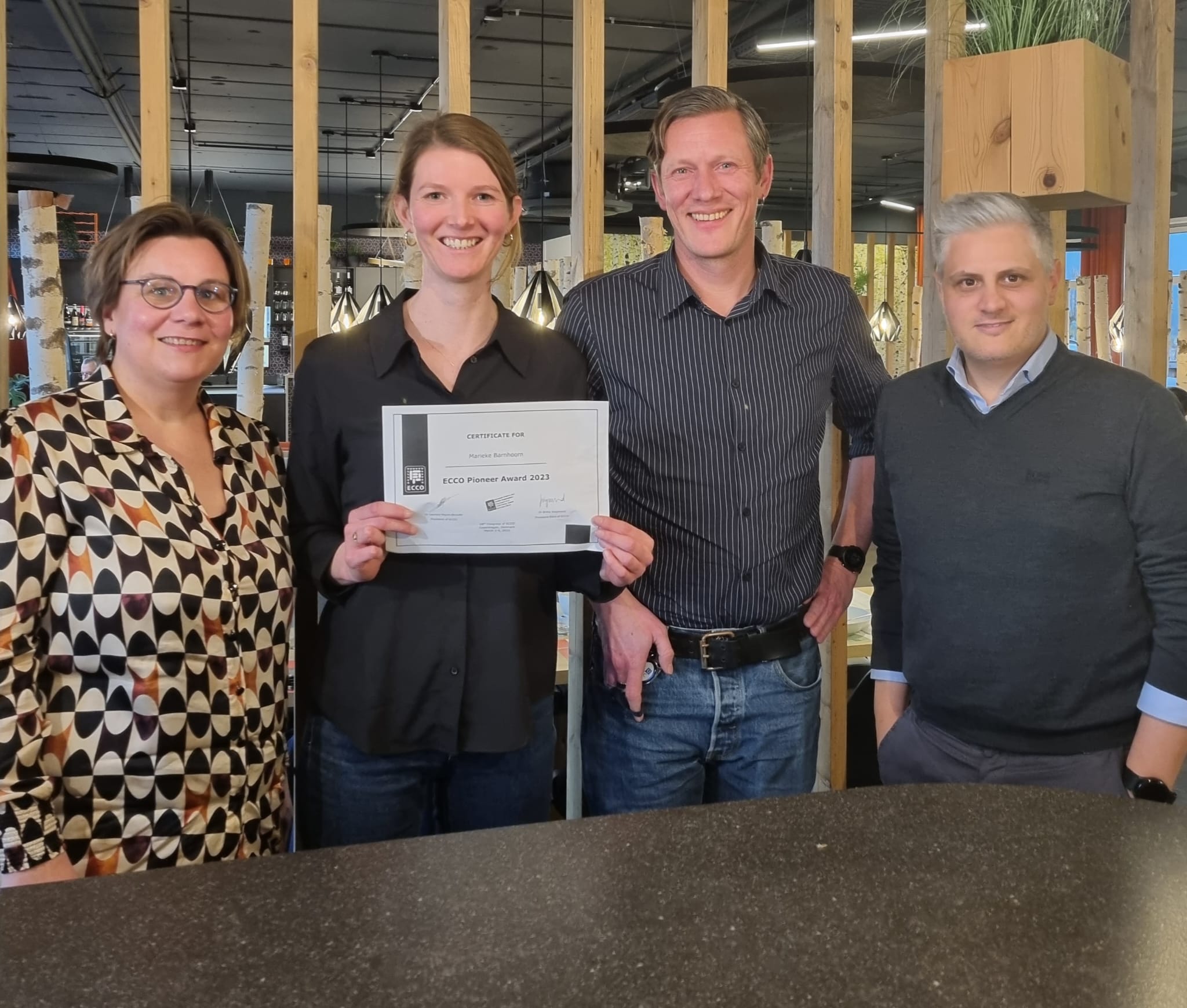ECCO Pioneer Award Synopsis: Marieke Barnhoorn and Gianluca Matteoli as co-partner in Leuven
Marieke Barnhoorn, ECCO Grant Awardee and Gianluca Matteoli as co-partner in Leuven
Unraveling the role of fibroblast subsets in fibrostenotic Crohn’s disease
 Andrea van der Meulen-de Jong, Marieke Barnhoorn, Luuk Hawinkels, Gianluca Matteoli © Marieke Barnhoorn |
Objectives
Fibrosis occurs in most Crohn’s Disease (CD) patients, although it only becomes clinically apparent in those who develop stenotic disease. Fibroblasts are considered the main cell type contributing to fibrosis by production and remodelling of the extracellular matrix. Recently, changes have been shown in the relative abundance of different fibroblast subsets in the inflamed intestine of IBD patients. However, the abundance of fibroblast subsets and their spatial localisation in fibrostenotic IBD tissue are currently unknown. The overall aim of this project is to unravel the role of fibroblast subsets in the pathogenesis of fibrostenotic CD and to identify novel therapeutic targets.
As a first objective, we will map the differences in abundance and spatial distribution of fibroblast subsets in patients with inflammatory and stenotic CD using a unique 40-marker fibroblast Imaging Mass Cytometry (IMC) antibody panel. Thereafter, as a second objective, we will investigate (pathogenic) fibroblast subsets derived from fibrostenotic lesions in CD patients using a fibroblast-rich, three-dimensional organoid-based model. Lastly, we will assess in CD patients the effects of Janus kinase (JAK) inhibition on the relative abundance of identified fibroblast subsets.
Methodology
We will use our new 40-marker fibroblast IMC panel for high-dimensional characterisation of fibroblast subsets in fibrostenotic CD. Thereafter, mechanistic studies will be performed using three-dimensional fibroblast-rich intestinal multicellular organoids to assess the effects of stenosis-associated/pathogenic fibroblast subsets on extracellular matrix production/remodelling and other fibrosis-related read-outs. Finally, the effects of JAK inhibition on fibroblast subsets will be assessed using IMC on paired tissue samples from CD patients before and 24 weeks after the introduction of a JAK inhibitor.
Proposed Timing
By the end of this year we hope to have completed 50% of the stromal subset analysis using IMC. The deadline for the entire stromal subset analysis is March 2024. In the meantime, we will be working on the multicellular model with different subsets of fibroblasts, and we hope to complete this work by summer 2024. Finally, by the end of 2024, we expect to have sampled enough patients to evaluate the effects of JAK inhibitors on stromal cell subsets.
Posted in ECCO News, SciCom, Committee News, Volume 18, Issue 2, Fellowships & Grants Synopsis Reports


